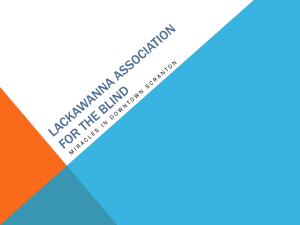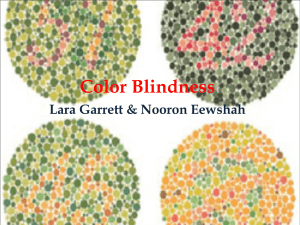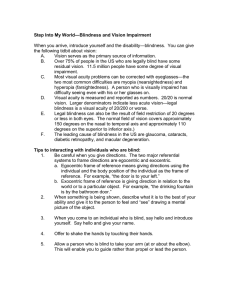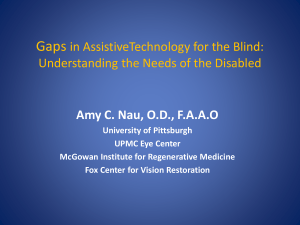KelseyR, EthanW Color Blindness - OG
advertisement
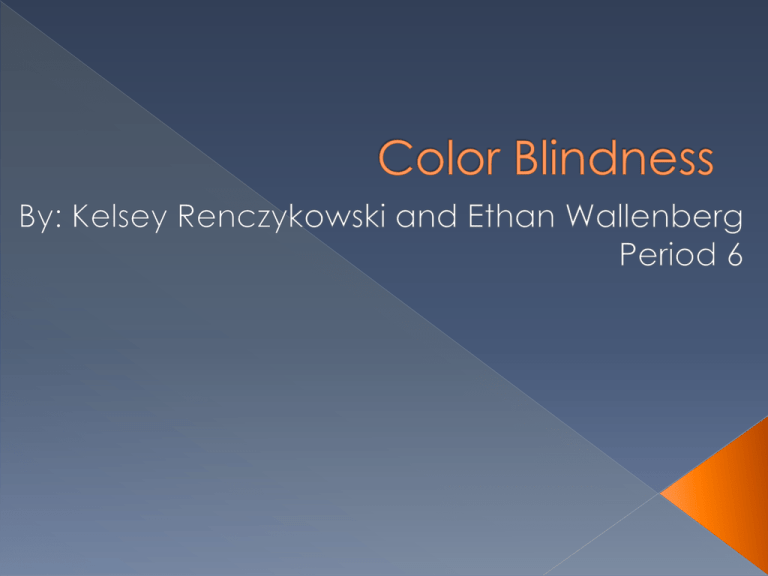
Occurs when there is a problem with the pigments in your eyes, called your cones The three types of cones are red, green, and blue If one is missing you will have trouble differentiating colors The most common type of color blindness is being able to tell the difference between green and red John Dalton(someone who was color blind himself) was the first one to write about color blindness Also called Daltonism, after John Dalton Not being able to differentiate colors May see many colors at once, so that you can not tell what color something is May only be able to see a few shades of color In rare cases, you can only see black, white and/ or gray No known treatment Some contacts/glasses can help but they don’t show normal colors and can alter objects Two tests can be performed i. Looking at colored dots to read what is in them ii. Arranging colored chips by how similar the colors are to each other Inherited trait i. Your cones in your eyes can be defective from birth ii. Guys are more at risk because the deficiency is encoded on the X chromosome Can be acquired i. Comes with age ii. Injury to the eye iii. Glaucoma, cataracts, diabetic retinopathy iv. Side effect to medications 99% of people who are color blind are red-green color blind 0.5% of women are color blind If a woman is red-green color blind, all her sons will be too, but fathers cannot pass it on to their sons A survey found that, “What color is this?” is the most annoying question you can ask a person who is color blind Desiree Mercer is red-green color blind, but Destinee is not Color Blind Eye NonColor Blind Eye Kennard, Jerry. "Color Blindness." 2 January 2007. 18 February 201 https://sites.google.com/site/colorblindness3042010/funfacts Thompson, Gregory E. "WebMD." 20 July 2011. Eye Health Center . 18 February 2013. http://www.webmd.com/eye-health/eye Vorvick, Linda J. "PubMed Health." 1 June 2011. A.D.A.M. Medical Encyclopedia . 18 February 2013. http://www.ncbi.nlm.nih.gov/pubmedhealth/PMH0001997/




